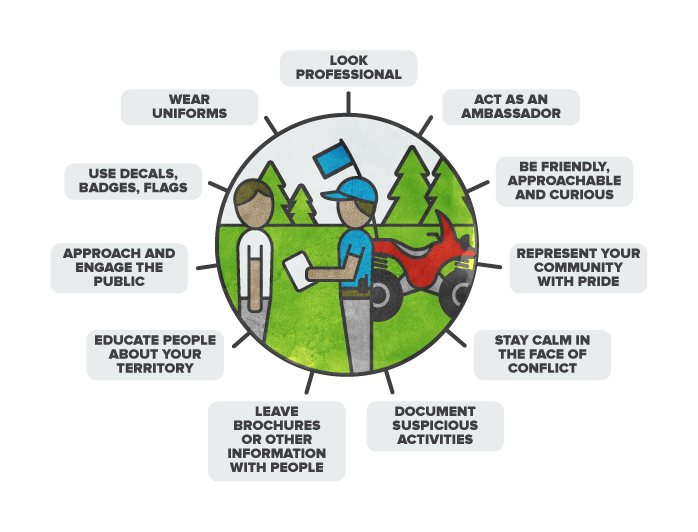To maximize the impact of your guardians’ presence on the lands and waters, try to make them recognizable. Many guardians who wear uniforms report an increased sense of respect and responsiveness from the people they are interacting with, including members of the general public and the community. Uniforms can be as simple as a hat and a jacket with your program name or emblem. Or, it could include standardized pants, shirts, and jackets for different seasons. See the Coastal Guardian Watchmen Network Uniform Policy for guidance on how to ensure that guardians adhere to a standard of conduct when wearing their uniforms.
In addition to uniforms, vehicles (ATV’s, skidoos, boats, trucks, etc.) can be marked with decals or flags so that people recognize your guardians as they travel throughout their patrol areas. See the Flag Policy used by the Coastal Guardian Watchman Network to clarify the responsibilities and expectations for guardians when they fly a flag on their boat or vehicle.
Official identification cards similar to what conservation or fisheries officers carry can be carried by guardians and presented when approaching people. Alternatively, official letters that provide detailed information on what guardians are authorized to do on behalf of the community can be presented.
